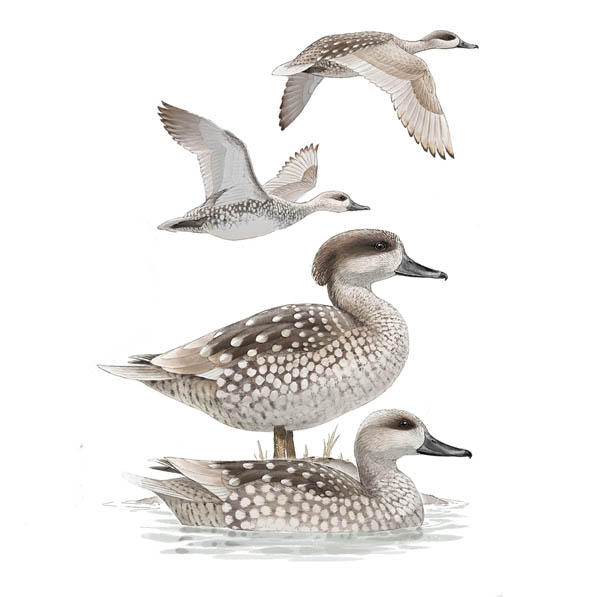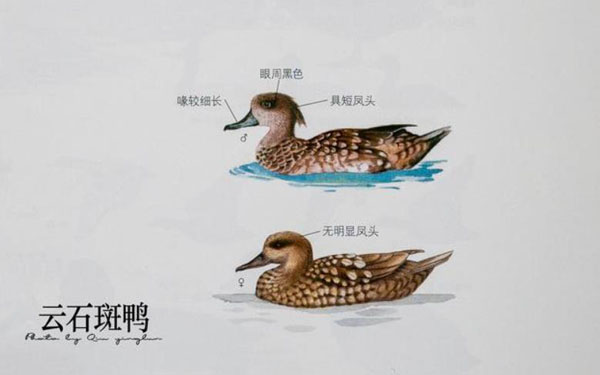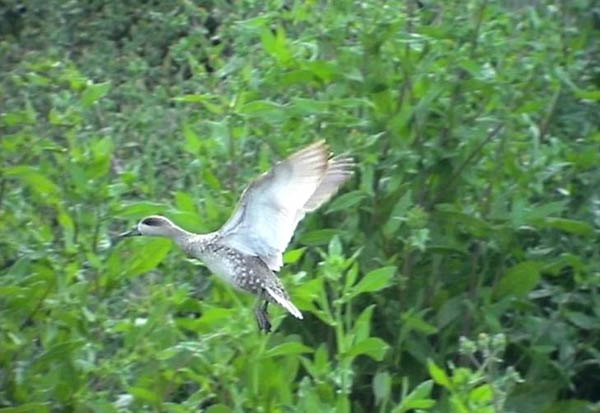Marmaronetta angustirostris
IUCN
LCBasic Information
Scientific classification
- name:Marmaronetta angustirostris
- Scientific Name:Marmaronetta angustirostris,Marbled Teal,Marbled Duck
- Outline:Waterfowl
- Family:Anseriformes Anatidae Duckling
Vital signs
- length:380-487mm
- Weight:240-600g
- lifetime:
Feature
There is a short, hanging crest on the back of the head, which is most obvious in the male bird.
Distribution and Habitat
Rare in western Xinjiang, China. Abroad, it is distributed in lakes from Western Europe to Central Asia, and in northern Africa during the non-breeding season.
The Clouded Duck mainly inhabits freshwater or saltwater lakes, small reservoirs, and slow-flowing rivers rich in emergent plants and shore plants. It also appears in fish ponds and coastal swamps.
Appearance
The whole body is gray with yellow-white spots. The upper body is darker gray, and the head and eyes are darker gray around and behind the eyes, forming a fuzzy eye mask. The body color is monotonous but it is difficult to confuse with other geese and ducks. The iris is dark brown, the bill is blue-gray, and the feet are olive yellow.
Details
The Clouded Duck often moves in small groups. It often gathers in large groups in some important waters during the non-breeding season. It is active in the early morning and dusk. It spends most of the day floating in the emergent plants or perching on branches that are partially submerged in water. It flies fast, straight and low.

The Clouded Duck mainly swims and feeds in shallow water. It also wades for food. Sometimes it also feeds by diving or diving into the water. The food is mainly plants and small invertebrates.

The breeding season is from May to July. The breeding pairs are formed in winter. They often nest together in small groups. The nests are very close to each other. In places with low population density, the distance between nests is also larger. They usually nest in the vegetation on the ground near the water. The nest is made of dead grass, with a small amount of hay and down feathers inside. Each nest usually has 10-11 eggs under artificial breeding conditions. In the wild, it has 7-13 eggs. The color of the eggs is light yellow, milky white or brown. The size of the eggs is 42.5-51×31.5-36 mm, with an average of 46×32 mm and weighing 31 grams. The female bird is solely responsible for incubating the eggs. The incubation period is about 25-27 days.

Listed in the second level of the "List of National Key Protected Wildlife in China".








